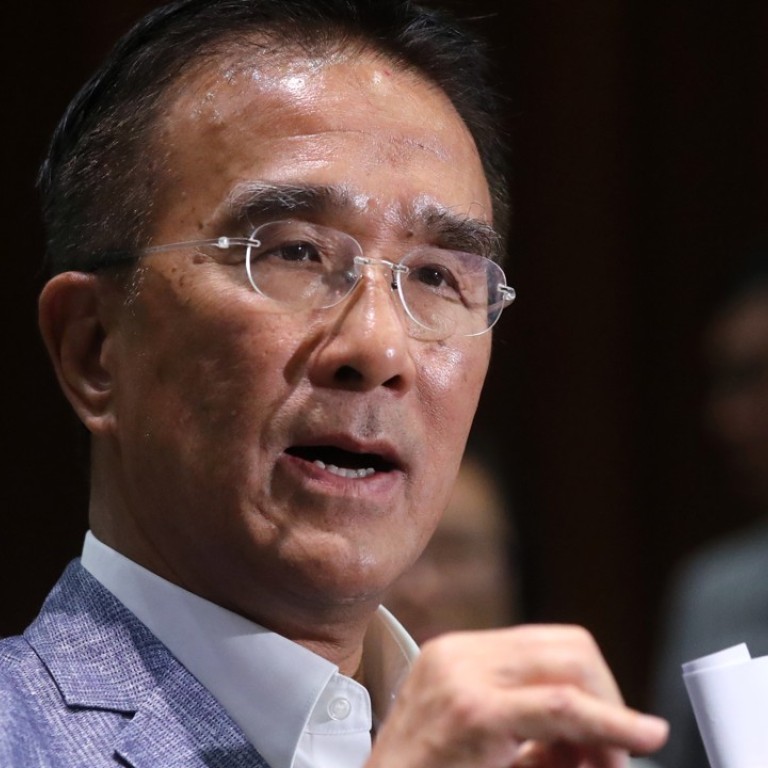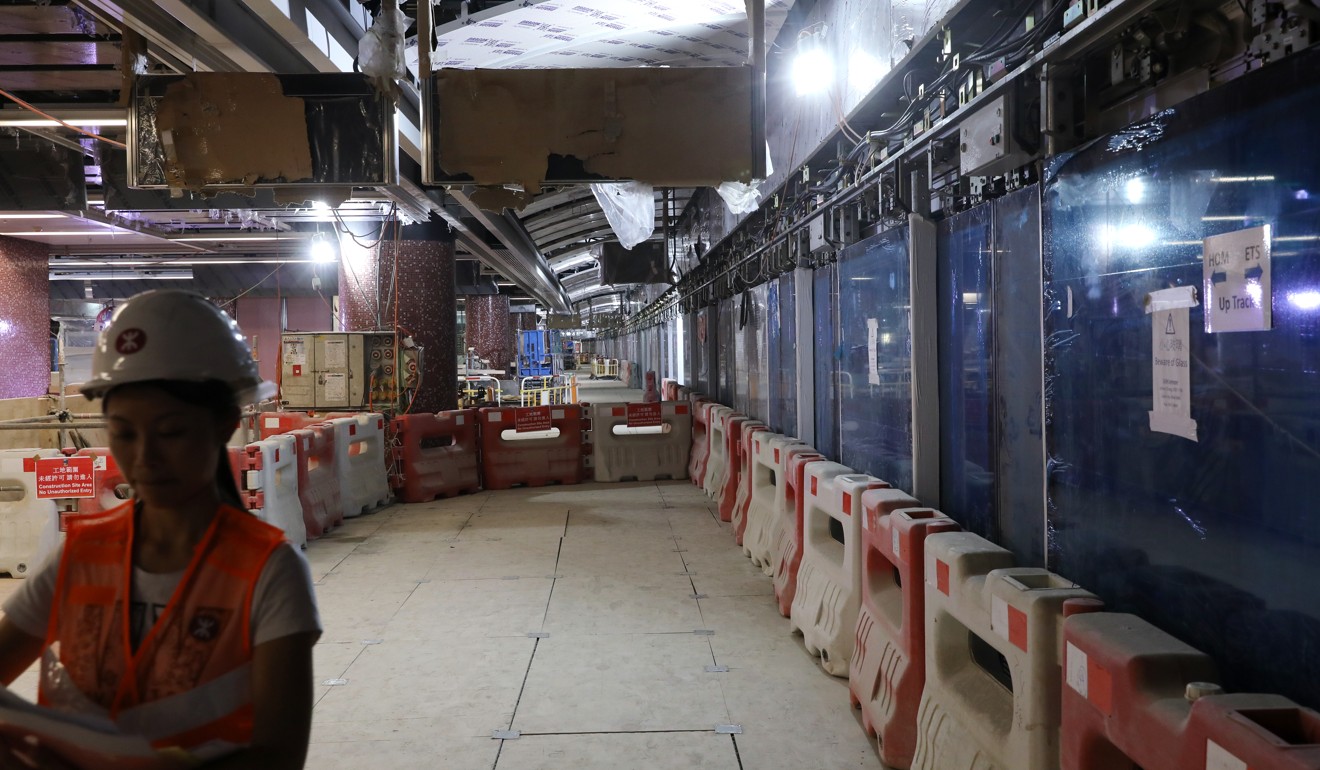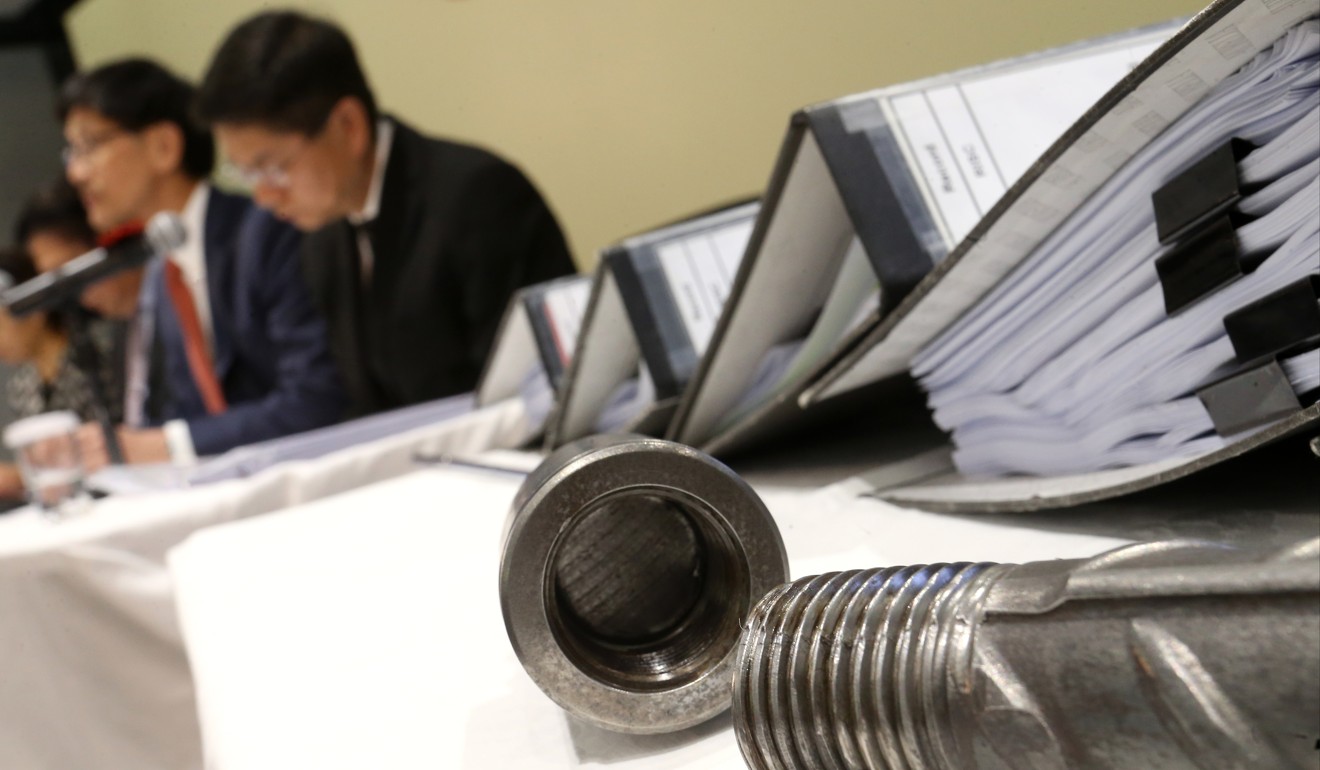
5,000 steel bars – 200 times initial number announced – affected in MTR works scandal, Hong Kong lawmaker alleges
Former rail boss Michael Tien quotes ‘reliable’ sources in damning statement for city’s embattled rail giant
The problems plaguing Hong Kong’s costliest railway project may be far worse than the MTR Corporation admitted, according to lawmaker and former rail boss Michael Tien Puk-sun.
Tien told a radio show that 5,000 bars – about 20 per cent of the total amount – supporting a platform at the station had been shortened.
The growing scandal centres on shoddy work that was first exposed by the media, involving bars that were cut short to make it seem as if they had been properly screwed into couplers. Earlier this month, the rail giant said only 25 bars were affected.

The MTR Corp came under further criticism as reports later surfaced of other faulty designs at stations along the HK$97.1 billion (US$12.4 billion) line.
The latest news I’ve got made me feel very uncomfortable
“Recently, I heard as many as 20 per cent of the steel bars … were cut short,” he said.
At an MTR Corp press conference on June 6, as senior management sought to explain the scandal, projects director Philco Wong Nai-keung said the operator had found instances of shortened steel bars five times between August and December 2015.
Wong said at most 25 bars had been cut in that period. On four of the occasions there was a problem with the work, the issue was not documented and, as a result, the MTR Corp did not know who was responsible.
On Sunday Tien said the alterations could pose a long-term threat to rail safety.
Pillars holding up track at Yuen Long station are sinking, admits MTR
“There may not be any problem if we conduct stress tests today, but I am worried that issues will emerge in five to 10 years, and then service on the whole railway will have to stop,” Tien said.
To fix the problem, he said, at least five walls at the station would have to be partially demolished for thorough inspections. If a large number of steel bars were found to be defective, more work would be required to strengthen the structure.

Tien said he believed no one, including MTR management, main contractor Leighton and frontline workers, could produce substantive records of how all 26,000 steel bars were installed.
Asked if his sources were credible, Tien said past information he had received from them “was largely accurate and in the right direction”.
A spokesman for the MTR Corp did not confirm the numbers given by Tien, but said a report had already been submitted to the government to confirm that Leighton had completed the project according to the contract and relevant legal requirements.
The report included various information obtained from subcontractors, and the MTR Corp would leave it to a government-appointed commission of inquiry to follow up on the matter, the spokesman said.
MTR Corp conducts full probe into safety lapses along HK$97.1 billion rail link
The independent commission was set up by Chief Executive Carrie Lam Cheng Yuet-ngor earlier to get to the bottom of the matter, while MTR board members also ordered managers to come up with proposals to improve internal reporting.
On Friday, the MTR Corp also revealed it had discovered in 2012 that pillars supporting two viaducts at the Yuen Long station of the West Rail Line, near the construction site of the third phase of the luxury Grand Yoho development, had started to show signs of subsidence.
The viaducts subsided by 20mm, which was within an acceptable range and would not cause any structural safety problems, according to officials. Reinforcement work on the pillars is expected to be completed by the end of this year.
Alfred Sit Wing-hang, director of the government’s Electrical and Mechanical Services Department, said on Sunday that there was no need to worry about safety on the West Rail Line.
“We will pay attention to the situation, and ask the MTR Corp to give us information. But I want to emphasise that it will not affect the railway’s operation or safety,” Sit said.
“We have a very strict arrangement to keep us informed that the MTR Corp is ensuring the rail tracks and other facilities are not affected [by the subsidence].”

